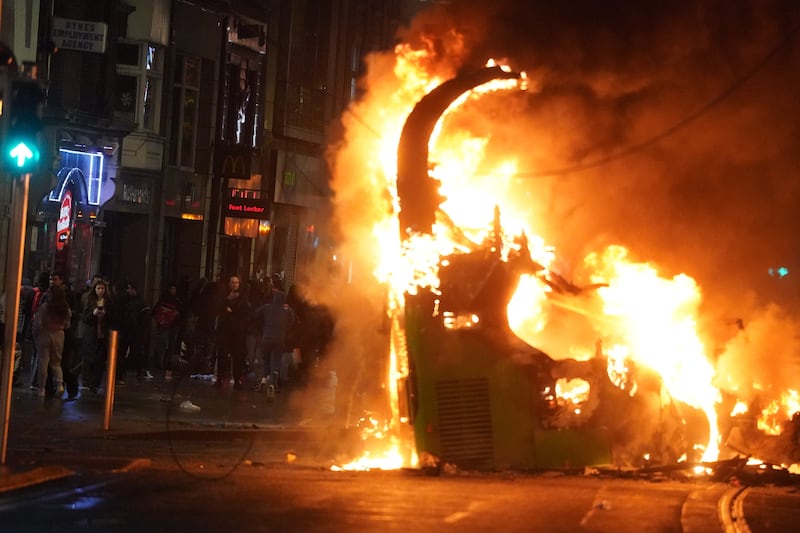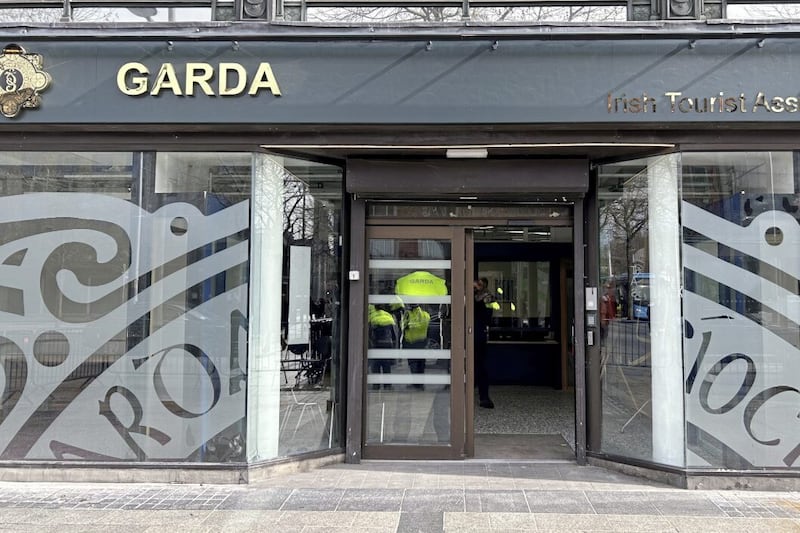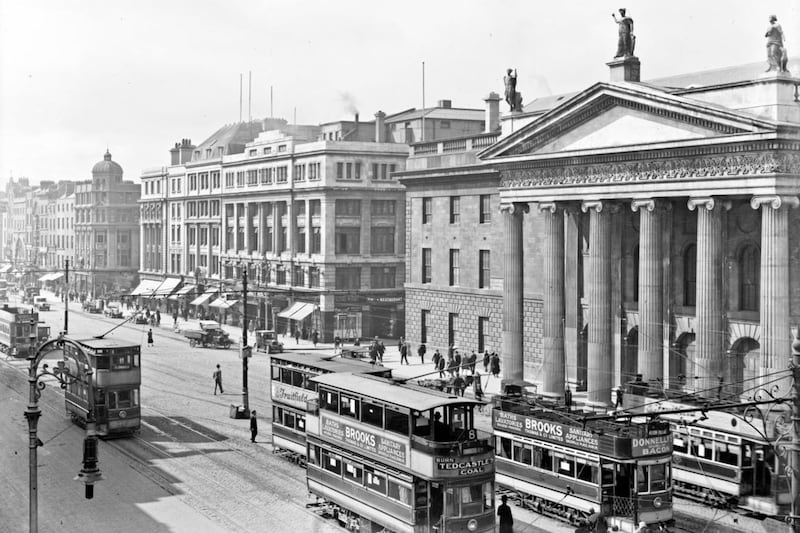I was six or seven when I first visited O'Connell Street. We were staying in Dublin for a night on our way back to Liverpool from Mulranny. As brief a stay as it was, my mother insisted on taking me to O'Connell Street, specifically the General Post Office, and the bullet holes scarring the pillars.
This wasn't a sentimental visit. We weren't there to pay tribute. While I'm more Irish than Joe Biden, my ancestors left Ireland too long ago to count.
No, we were there to see history, evidence of an event of huge significance in Britain and Ireland, with reverberations that shuddered around the globe. At this building. In this street.
Nicola Pierce's new book understands that, and demonstrates its truth in page after page.
Her first sentence, in her author's note, makes her position clear: "I have always believed that O'Connell Street tells the story of Ireland." And the story of Ireland, of course, stretches far beyond its shores.
The opening chapter provides an overview charting the development of O'Connell Street and bears out Pierce's assertion in the preface.
First appearing on a map in 1728, it began life as Drogheda Street, no more than a narrow lane that didn't even reach the Liffey. Under the ownership of visionary Georgian developer Luke Gardiner, however, its appearance changed radically.
Gardiner widened the street, knocked down most of the existing houses and built 400 more in their place. Renamed Sackville Street, in honour of the English Lord Lieutenant of Ireland, Lionel Sackville, and closed at its southern end, it was home to the upper echelons of Dublin society, all of whom were able to enjoy the tree-lined promenade running along the centre of the street, without having to endure the presence of the hoi polloi.
Pierce makes interesting points as she details the progression of the street. In the late 1700s, the Wide Streets Commissioners opened up the south end of Sackville Street and extended it to meet the bridge over the Liffey.
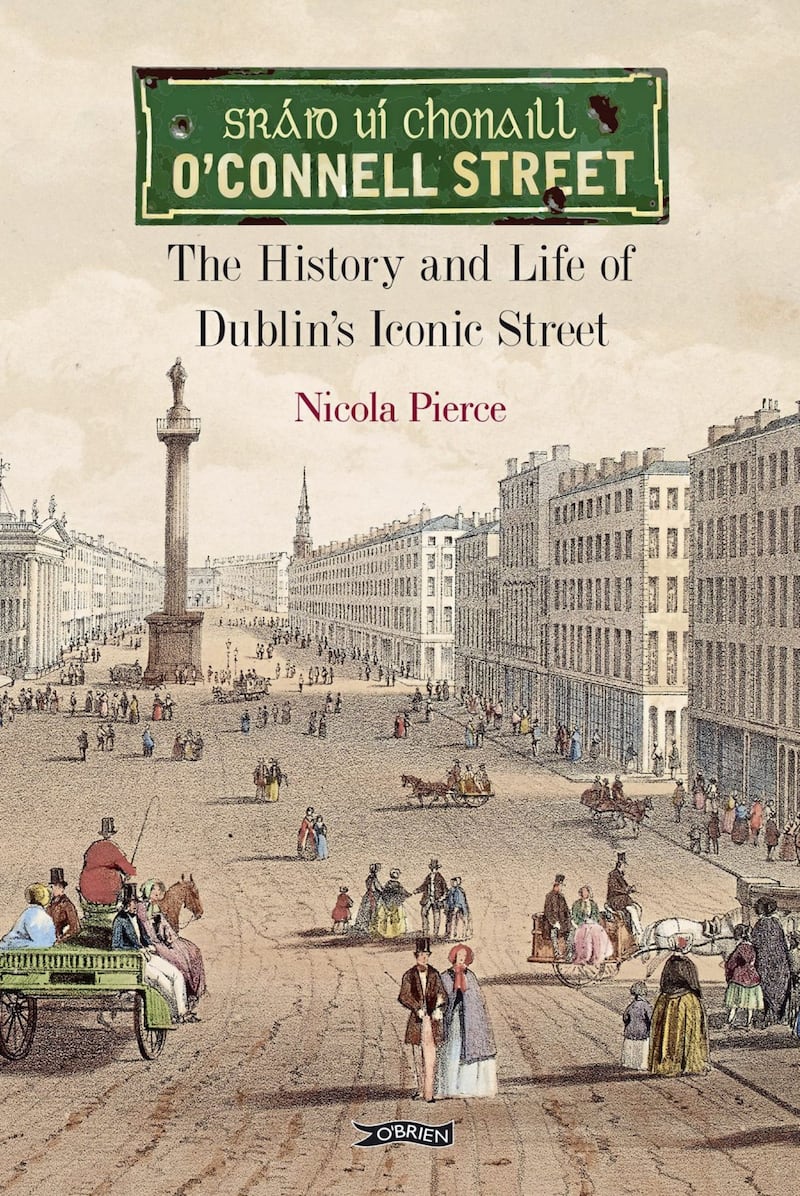
Keen to beautify the city, they took their inspiration from Paris and, especially, London. She references Gary A. Boyd's book on Dublin in which he suggests the commissioners, in their development of Sackville Street, desired to create an elite Protestant city within the larger city, and repeats the same author's belief that the construction of the GPO and Nelson's Pillar was a "discreet act of imperialism", erasing Dublin's Irishness.
She is very particular in stating the fact that Sackville Street only became O'Connell Street in 1924.
The book is laid out usefully and effectively. Rather than plod along the street year by year, the chapters are broken down into subjects: Statues and Monuments; Landmark Buildings; The Cinemas; O'Connell Street Bridge; Murder and Mayhem; and Gatherings.
This allows Pierce to focus on the social and political developments that the street saw, while keeping attention on the bricks and mortar. It also means the reader – citizen or tourist – can read it in two ways: start to finish or dipping in and out.
Dipping in is easy enough; dipping out is more problematic. It is possible to open it up at almost any page and find yourself engrossed in its facts and details.
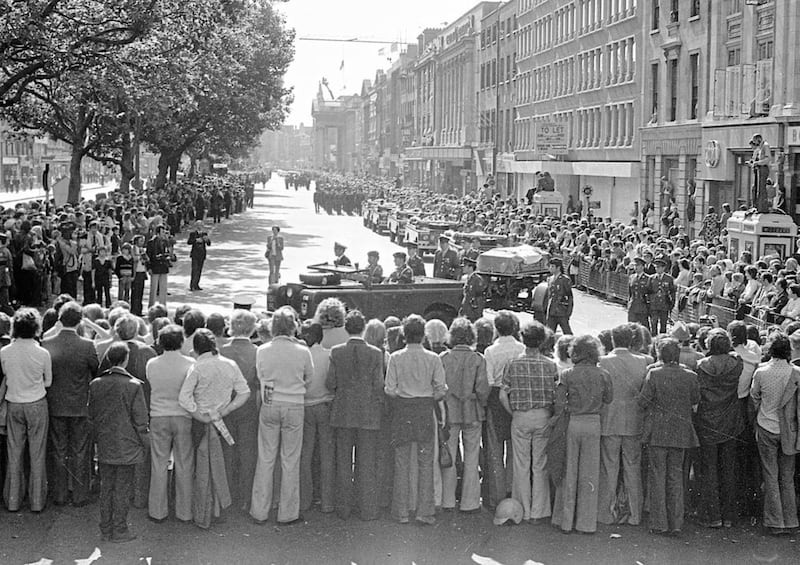
Certain names act as lightning rods for attention. Daniel O'Connell himself, of course is one. Collins, de Valera, James Larkin are just three others, and the book shows how the street acted as a backdrop and setting for so many of their actions, and the response of the authorities to them.
We learn – or learn again – of so many acts of bravery and brutality, sacrifice and slaughter.
But there is much more here than just the familiar roll call. This is a book of ordinary men and women, too, and how they came together, in the cinemas, shops, and hotels, and on the street itself.
We meet them gathered to mourn the likes of Margaret Pearse and Lillie Connolly, among others, and learn what it was that brought them there. We see them greeting presidents and astronauts. We see them innocent and battered by police, and ripped apart by bombs.
Blood-spattered, elegant, frivolous, heroic, bricks, mortar, men, women, and children – it is all packed in here in this book, written with a historian's eye for truth and detail, and a novelist's nose for a good story.
This is a lucid, enthralling, rich and readable account of how one street watched while Ireland's history played out within its compass, an important contribution to an understanding of a nation's progress.
O'Connell Street: The History and Life of Dublin's Iconic Street by Nicola Pierce is published by The O'Brien Press in hardback, £17.99.



